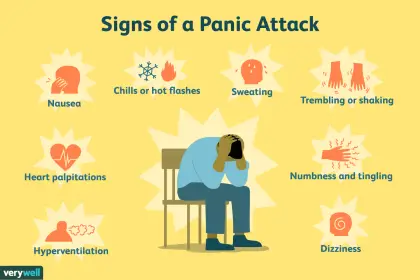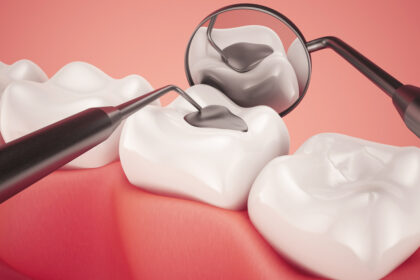Our homes are our sanctuaries, places where we seek safety and comfort. However, beneath the surface of cozy living lies a potential threat: toxicity. From the paint on the walls to the air we breathe, various aspects of our homes can harbor harmful substances that affect our health. In this article, we delve into the top 10 most toxic things commonly found in American homes, exploring the impact each has on our well-being.
1. Lead Paint: A Silent Menace from the Past
Homes constructed prior to 1978 often feature lead-based paint. While repainting might seem like a routine task, disturbing lead paint releases toxic dust and chips. Lead poisoning, especially dangerous for children, can lead to developmental delays, learning difficulties, and behavioral problems.
2. Asbestos: The Lingering Hazard
In older homes, asbestos can be found in insulation, ceiling tiles, and flooring. When these materials degrade, tiny asbestos fibers become airborne. Inhaled fibers can lodge in the lungs, potentially causing lung cancer, asbestosis, and mesothelioma.
3. Cleaning Products: The Hidden Air Pollutants
Many conventional cleaning products contain volatile organic compounds (VOCs) that contribute to indoor air pollution. Prolonged exposure to these chemicals can irritate the respiratory system, trigger allergies, and even lead to chronic conditions over time.
4. Pesticides: Combatting Pests, Endangering Health
Household insecticides and herbicides contain toxic chemicals designed to combat pests. However, their residue can linger on surfaces, exposing occupants to health risks. Prolonged exposure to these chemicals has been linked to neurological disorders and certain cancers.
5. Mold: The Unseen Invader
Excess moisture can lead to mold growth in homes. Mold releases spores that can trigger allergic reactions, exacerbate asthma symptoms, and lead to respiratory infections. Prolonged exposure can have serious health implications, particularly for those with compromised immune systems.
6. Radon Gas: Radioactive Threat Below
Radon, a naturally occurring radioactive gas, can seep into homes from the ground. Long-term exposure to high levels of radon is a leading cause of lung cancer, making it essential to test homes for this invisible threat.
7. Formaldehyde: Lurking in Everyday Items
Commonly found in building materials, furniture, and household products, formaldehyde is released as a gas over time. Prolonged exposure can lead to respiratory issues, skin irritation, and even an increased risk of certain cancers.
8. Air Fresheners: Masked VOC Emission
While intended to enhance indoor air quality, many air fresheners contain synthetic fragrances and VOCs. These chemicals can exacerbate respiratory problems and contribute to indoor air pollution, negating their intended benefits.
9. Carbon Monoxide: The Silent Killer
Appliances like gas stoves, furnaces, and water heaters can produce carbon monoxide (CO), a colorless, odorless gas. CO poisoning can lead to headaches, dizziness, nausea, and even death. Regular maintenance of such appliances and installation of CO detectors are vital safeguards.
10. Plasticizers and Flame Retardants: Hiding in Plain Sight
Plastics, furniture, and electronics often contain chemicals like phthalates and flame retardants. These substances can leach into the air and dust, potentially impacting hormonal balance, neurodevelopment, and reproductive health.
In conclusion, our homes might hold dangers that remain hidden from plain sight. Acknowledging these potential toxins and taking proactive measures to minimize exposure is paramount for safeguarding the health and well-being of our families. From testing for radon to choosing eco-friendly cleaning products, every step towards a healthier home environment is a step towards a brighter future.
How To Counteract Chemicals in The Home:
According to NASA, the impact of opening windows on enhancing indoor air quality is remarkable, potentially resulting in an astounding 400% improvement in air quality. Indoor environments often suffer from the accumulation of pollutants like dust particles, volatile organic compounds (VOCs), and allergens, which can have detrimental effects on human health. These pollutants originate from various sources, including cooking, cleaning products, and outdoor contaminants that seep indoors. In the absence of proper ventilation, these pollutants can become trapped, leading to a range of health issues.
NASA’s research emphasizes the significance of natural ventilation achieved through open windows. This process facilitates the exchange of indoor and outdoor air, permitting fresh outdoor air to enter and expelling stagnant indoor air. This exchange dramatically reduces the concentration of pollutants, leading to a substantial enhancement in indoor air quality. Furthermore, open windows contribute to the regulation of humidity levels, preventing the excess moisture that encourages mold and mildew growth, further enhancing the indoor environment’s healthiness.
The implications of improved air quality are far-reaching and align with NASA’s focus on creating habitable and sustainable environments. Better air quality not only promotes respiratory health but also elevates cognitive function, reduces allergies and asthma symptoms, and fosters an overall sense of well-being. By harnessing the power of natural ventilation, occupants can experience heightened comfort and productivity, fostering a stronger connection to the external environment. While the degree of air quality improvement depends on factors like external air pollution levels and weather conditions, NASA’s endorsement of a potential 400% enhancement underscores the transformative potential of a simple act like opening a window.
Take Radiate 21 For Lung, Lymphatic & Gut Health:
Radiate 21 is a blend of twenty-one ingredients formulated for gut health, lymphatic health and EMF protection. It also happens to contain four of the highest rated antioxidants that support lung health and oxygenation throughout the body in the world. Over the years we breathe in these toxic chemicals at our homes, in the office, at the gym and at various other places. In an effort to repair the lungs, lymphatic system and gut Radiate 21 was formulated.
Radiate 21 includes a blend of liquid botanicals in a capsule to support the repair and restoration of your gut, lymphatic system and lungs. It also helps to combat free radicals and oxidative stress which are caused by chemical and toxin exposure.
Click here to visit Radiate21.com
You can learn how ORAC antioxidants help to rejuvenate the body in this video here:






